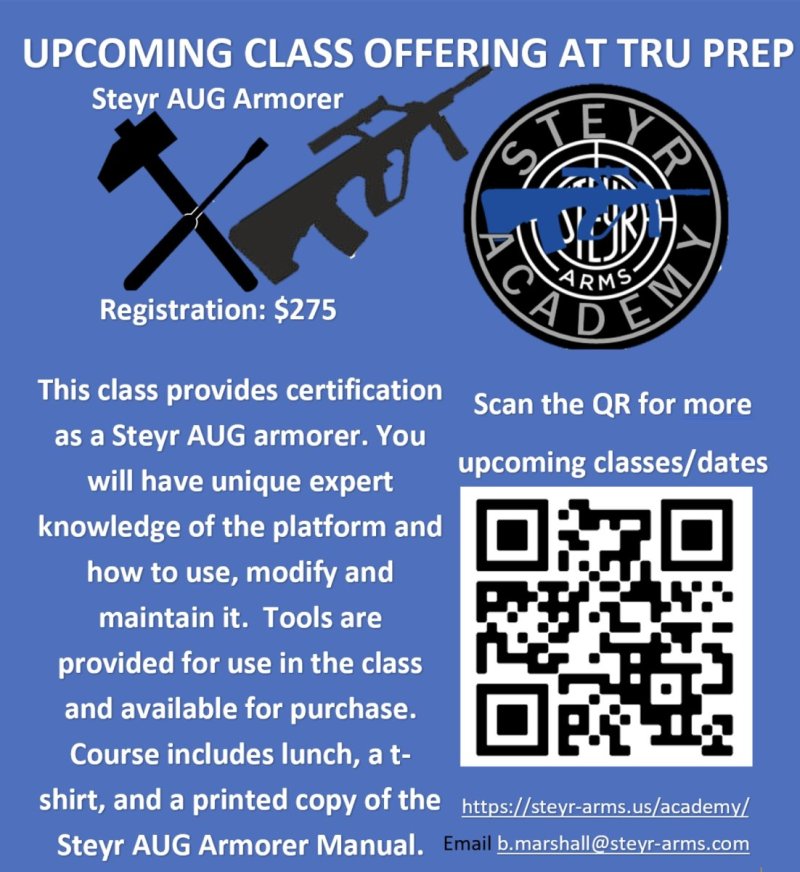Pressure is the key. I do all my training while my wife checks my browser history.I don't know if you are a hunter or not, but it definitely helps with making shots under some pressure. The more you hunt, the more you kill. The more you kill, the less pressure you feel.
There is lots of game out there besides deer, birds, rabbits, and squirrels. I've shot a few hogs (shot one a few weeks ago) and did not feel any pressure or have a "blur" when they were in close proximity. My rifle, or pistol makes me more dangerous than any critter. Even the carnivores...Still, any hunter can feel a bit of pressure under the right circumstances, dangerous or not.
My sentiment is shared by many, including Col Jeff Cooper.
Navigation
Install the app
How to install the app on iOS
Follow along with the video below to see how to install our site as a web app on your home screen.
Note: This feature may not be available in some browsers.
More options
-
ODT Gun Show & Swap Meet - May 4, 2024! - Click here for info
You are using an out of date browser. It may not display this or other websites correctly.
You should upgrade or use an alternative browser.
You should upgrade or use an alternative browser.
Preventing getting in a blur when taking a shot.
- Thread starter CAMSDADDY
- Start date
Unload your weapon first!Train train train. What will seem like a blurr will be a placed shot. Practice looking at a spot and snapping your weapon to your eyeline, sights aligned to the spot. Dots on post-a-notes scattered throughout the house will help with this. Start slow, speed will come.
Back in the day I always cleared and dropped in a inert barrel and a two rd modified mag & solid barrel just to be safe with inert snap rounds. Made me more comfortable with neighbors etc (and nice stuff around). 30 seconds for a piece of mind. Now they make plastic drop ins. Better safe than sorry.Unload your weapon first!
Rack, move, squeeze, rack move squeeze, reholster etc. Rearrange dots repeat.
The old saying goes,
"an amateur trains until he gets it rights, a master trains until he can't get it wrong"
Most of us are extremely busy in our everyday life. But as has been stated, dry fire can improve the majority of shooting and gun handling skills short of actual shot anticipation and recoil management without taking tons of our valuable time. Marksmanship is easier to gauge with live fire but the motions behind it can be repeated through dry fire on light switches and power outlets.
It's like exercising. It can be easy to brush off because you can't dedicate a lot of time to it by going to a place with expensive equipment or pay the fee of using a facility. But everyone can do a 10 minute walk, a few push ups of some kind, stretches, etc.
Same with dry practice. Just 10 minutes or so a day equates to about 5 hours a month. That's a lot of time behind the gun, hot or not. Working from the holster, grip, trigger press, reloads, malfunction clearing, and sight alignment can all be done at home, for "free", with little time exchanged.
"an amateur trains until he gets it rights, a master trains until he can't get it wrong"
Most of us are extremely busy in our everyday life. But as has been stated, dry fire can improve the majority of shooting and gun handling skills short of actual shot anticipation and recoil management without taking tons of our valuable time. Marksmanship is easier to gauge with live fire but the motions behind it can be repeated through dry fire on light switches and power outlets.
It's like exercising. It can be easy to brush off because you can't dedicate a lot of time to it by going to a place with expensive equipment or pay the fee of using a facility. But everyone can do a 10 minute walk, a few push ups of some kind, stretches, etc.
Same with dry practice. Just 10 minutes or so a day equates to about 5 hours a month. That's a lot of time behind the gun, hot or not. Working from the holster, grip, trigger press, reloads, malfunction clearing, and sight alignment can all be done at home, for "free", with little time exchanged.
I’m not a big fan of post-it notes and obvious aiming points on targets. My focus is IPSC competition, where we’re shooting brown cardboard targets with an A-zone that’s offset from center of mass. A big part of match performance is snapping your vision to a precise spot on the target, where a no-shoot or hard cover might shift it from the usual position, then putting your signs or dot on that spot and pulling the trigger straight back fast. So in both dry- and live-fire practice I’m shooting the same featureless targets and learning to quickly look at the right spot.
Similar threads
- Replies
- 0
- Views
- 130
- Replies
- 1
- Views
- 132








